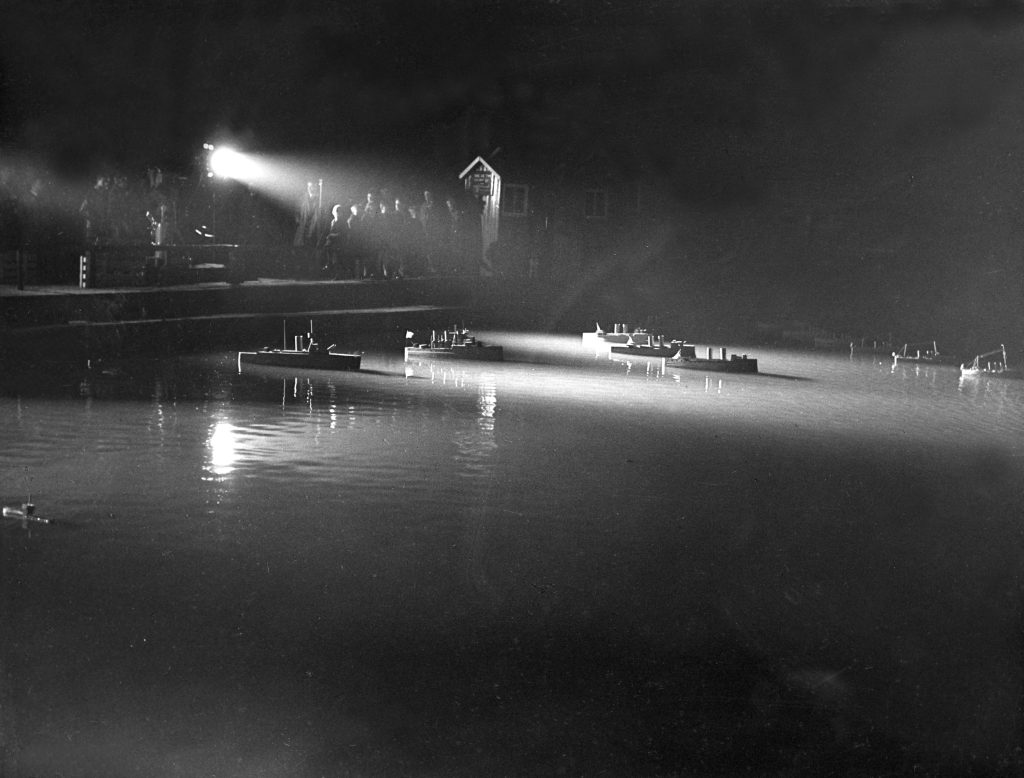OTD in early British television: 23 April 1938

John Wyver writes: On St George’s Day 1938, Saturday 23 April, and on the following evening, a ‘local OB’ from the lake close by the AP studios transmitted a reconstruction of the First World War naval attack exactly twenty years before on the Belgian port of Zeebrugge.
Used by the Imperial German Navy to support U-boats and other vessels, Zeebrugge was targeted in a wartime mission intended to shut down its operation by scuttling obsolete warships. Despite the block ships being sunk in the wrong position, the loss of 227 Royal Navy servicemen, and the port being accessible again after a few days, the raid was hailed as a success and exploited to raise Allied morale.
By 1924 it was the subject of the feature length documentary Zeebrugge, produced by New Era Films, which included extensive reconstructions, and of a lavish reenactment in the British Government Pavilion at the British Empire Exhibition at Wembley. The theatre here boasted a huge water-tank with below-the-surface railway tracks for model boats to run on, projected sky effects and co-ordinated firework explosions, all of which were electrically controlled.
Films of naval encounters re-enacted with models date back to Albert E. Smith and James Stuart Blackton’s Battle of Santiago Bay and Edward Amet’s Bombardment of Matanzas (both 1898). Now television followed with this local OB of showman Michael Ellison’s scaled-down Zeebrugge raid reconstruction which he had been presenting in bathing-pools across the country.
The largest plywood model was a nearly two-metre long HMS Vindictive, and it and the other boats were controlled by underwater lines attached to winding reels. Focussed torches swept across a painted backcloth. ‘The machine-gun fire… is reproduced by specially made jumping crackers,’ Radio Times readers were informed. ‘The sound of heavy shells comes from a firework called a Whistle Bang.’
An anonymous reviewer for The Listener was impressed:
it was remarkably easy to forget that we were watching models and not the real thing. There was the smoke pouring from the burning ships, the water flung high by genuine bursts of miniature “shells”, and the dramatic groping of the long fingers of the searchlights.
Like other military reenactments, this anniversary event had a commemorative function, but it was also a spectacle for entertainment, and along with the numerous television dramas set during the First World War, it contributed to the growing sense of ‘war-mindedness’.
Increasingly, with news from Germany and Austria, from Spain and Italy, there was a recognition that another war, more destructive even than the last, was inevitable, and this dread seeped into television broadcasts over the final 18 months.
Leave a Reply